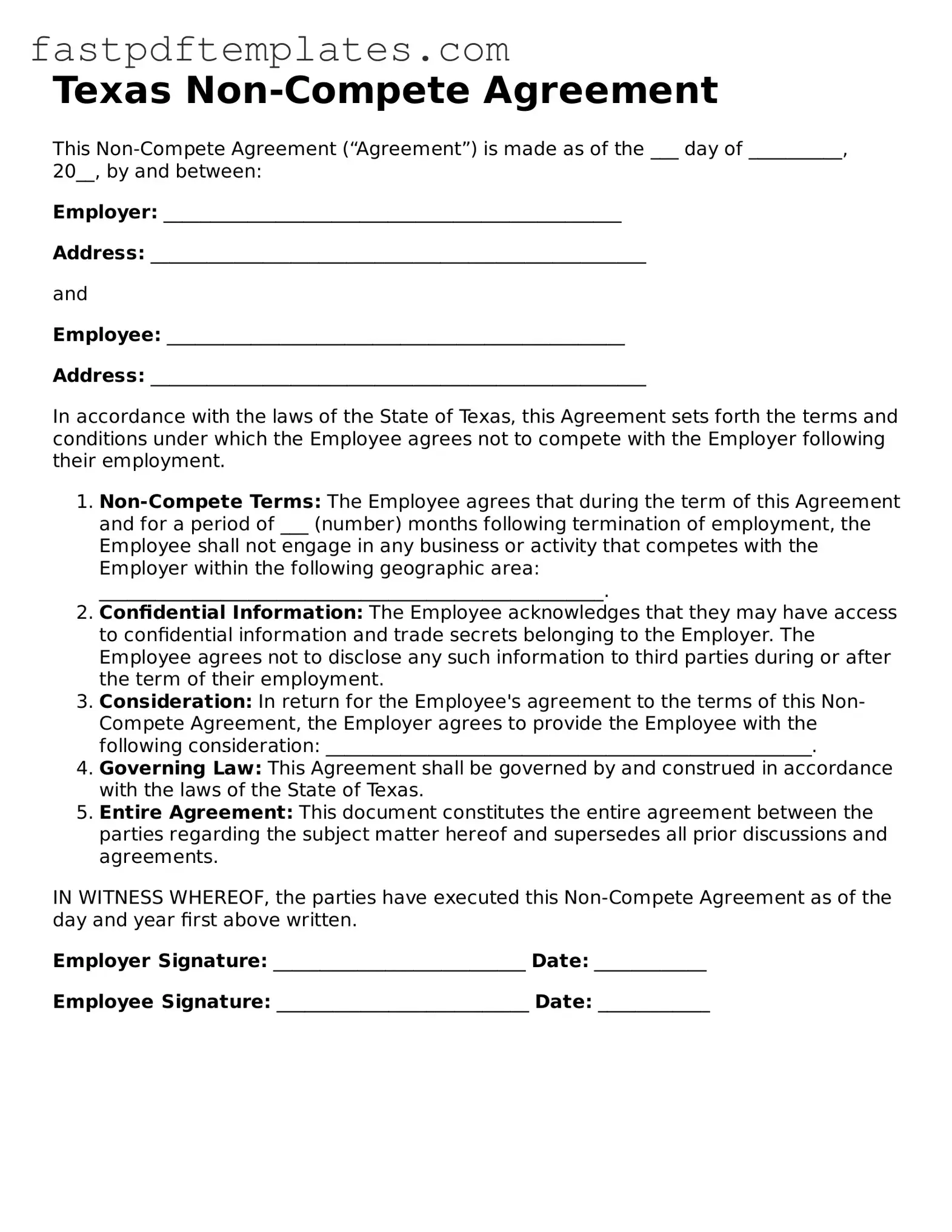Texas Non-Compete Agreement
This Non-Compete Agreement (“Agreement”) is made as of the ___ day of __________, 20__, by and between:
Employer: _________________________________________________
Address: _____________________________________________________
and
Employee: _________________________________________________
Address: _____________________________________________________
In accordance with the laws of the State of Texas, this Agreement sets forth the terms and conditions under which the Employee agrees not to compete with the Employer following their employment.
- Non-Compete Terms: The Employee agrees that during the term of this Agreement and for a period of ___ (number) months following termination of employment, the Employee shall not engage in any business or activity that competes with the Employer within the following geographic area: ______________________________________________________.
- Confidential Information: The Employee acknowledges that they may have access to confidential information and trade secrets belonging to the Employer. The Employee agrees not to disclose any such information to third parties during or after the term of their employment.
- Consideration: In return for the Employee's agreement to the terms of this Non-Compete Agreement, the Employer agrees to provide the Employee with the following consideration: ____________________________________________________.
- Governing Law: This Agreement shall be governed by and construed in accordance with the laws of the State of Texas.
- Entire Agreement: This document constitutes the entire agreement between the parties regarding the subject matter hereof and supersedes all prior discussions and agreements.
IN WITNESS WHEREOF, the parties have executed this Non-Compete Agreement as of the day and year first above written.
Employer Signature: ___________________________ Date: ____________
Employee Signature: ___________________________ Date: ____________
